This article is the concatenation and update of three previous articles on Personal Knowledge Management (PKM). It will be published later this year as a chapter in a compendium book on emerging trends in KM. 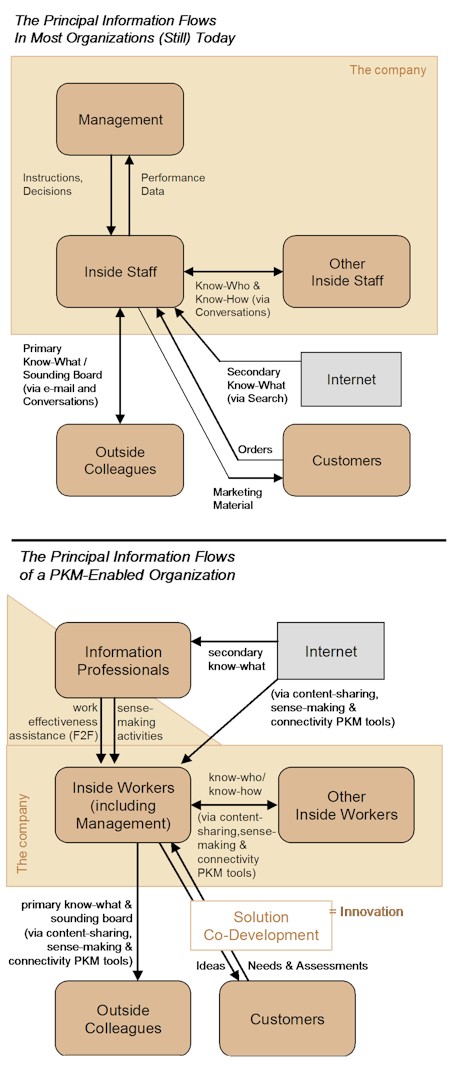 In North America at least, Knowledge Management (KM) budgets are under constant siege, KM leaders’ salaries and department headcounts have been cut back, the Knowledge Director role has been relegated to a subordinate back-office role, and many CEOs are searching for ways to outsource the function entirely. In other words, most executives either do not see KM as strategic to their organizations, or have lost faith that investment in KM offers an appropriate ROI. It’s time for the knowledge ‘champions’ of the world to get together, and to get our act together. As much as the idea of increasing the sharing and effective use of information and ideas is appealing to just about everyone, KM has not delivered on this promise. I believe time is running out. The story of KM so far has been, for the most part, a failure — failure to articulate, to imagine, and to implement. We allowed the bold vision of knowledge-sharing to be diminished and appropriated by those who saw it is merely an exercise in automating the acquisition, storage and dissemination of documents. Many IT departments saw it as another facet of technology — as competition for resources and as little more than an extension of the document management and website management functions they were already responsible for. Many training departments saw it as the ‘content’ side of training, and wondered why it didn’t report to them. Most executives saw it as a means to speed up and reduce the cost of the back office, the same way the assembly line had reduced manufacturing times and costs. And the creative people who often had the Knowledge Director thrust upon them conceived of KM as a means for increasing organizational innovation, customer satisfaction and employee retention. Now, a dozen years after the debut of KM, there has been little significant change in the efficiency, effectiveness or value of information processes or content in most organizations. Many companies that jumped early onto the KM bandwagon have all but abandoned it, while many organizations that waited are now repeating the mistakes of the pioneers. Despite this, interest in KM remains substantial, and this is because, while its promise has not really been realized, its potential is still enormous. And CEOs of many organizations, having studied the lessons of Enron, 9/11, Katrina and the Flu, have a nagging feeling that, no matter how great the cost of investing in KM may be, the ‘cost of not knowing’ is even greater:
What most organizations essentially did with KM was automate existing information processes. They took the paper ‘stuff’ in manuals and memoranda and newspapers and converted it into digital form. That made it easier and (sometimes) cheaper to maintain, but did not increase its value, which was, if you were to ask most of the people on the front line, pretty marginal anyway. Organizations provided staff with access to the Internet, but most of those who were inclined to use it already had it at home and were using it there, without the restrictions imposed by the company — so that, too, was of marginal benefit. In some cases employees are still forced to shuttle critical information between their work and home PCs. Most organizations, too, refused to abandon the top-down centralized information model that was already in place, merely institutionalizing it with firewalls, access restrictions, monster centrally-managed one-size-fits-all databases and websites and over-engineered, over-managed collaboration and community-of-practice tools. Essentially, neither managers nor early KM practitioners ‘got it’: KM is all about enabling people to obtain relevant, context-rich information, and connection with appropriate experts, easily, when they need it, so that they can be more effective doing their unique jobs. As a result, the critical business information flows, shown in the top diagram above, are essentially unchanged from what they were a decade ago. There have been some minor changes in the technologies used for these flows, but for the most part these have not been significant in improving front-line effectiveness of workers, and in some cases have actually made work more difficult. Management continues to rely on well-entrenched IS to promulgate instructions and policy decisions and to extract, often annoyingly and disruptively, information from the front lines that it needs to make business decisions. To traditional managers, information is still all about telling employees what to do and making sure they do it. Customers, outside the corporate firewalls and disinclined to participate in technology initiatives designed for the suppliers’ needs rather than theirs (as most e-newsletters, e-rooms and Extranets are), continue to interact, information-wise, with suppliers the same way they always have — receive (and usually turf) the marketing mail, put in their orders and rely on their ‘relationship manager’ to decipher the former and process the latter effectively. Business as usual, largely unaffected by KM. Things happen the way they do in organizations for a reason. When people are unable to get the information they need ‘within the system’, they will find workarounds to get it in other ways. This is nothing new, and it is commendable — it shows people care about the quality and effectiveness of their work. The #1 means of getting and sharing information is, was, and probably always will be conversations. Pick up the phone, walk down the hall, use IM (if your company allows it), use Skype (if your company allows it), or, as a last resort, send an e-mail to the people who might know what you need to know. It would make sense that KM would facilitate conversations, but if anything it has tried to obsolesce them — substituting context-poor databases that purportedly have the information you used to get from talking with people, more efficiently. Not surprisingly, this has rarely worked. What we in KM need to do is go back to the original premise and promise of KM and start again — but this time from the bottom up:
Fortunately, management of most organizations has more sense than that. The breakeven point for an investment of two hours of personal coaching for each employee in an organization is, after all, a mere 0.1% improvement in that employee’s work effectiveness. And, while some executives may be impatient and disenchanted with the return on their KM investment to date, they still appreciate Drucker’s argument that improving front-line worker productivity is “the greatest challenge of the 21st century” — that the answer isn’t to do as much with less investment, but to do much more with more. Revamp and upgrade the role of Information Professionals from content managers to personal work effectiveness enablers. Most knowledge workers have figured out how to get the content they need to do their jobs well, without any help from KM. Centralized content management initiatives offer little or no incremental value to them. What they need is hands-on help using the information and technology at their disposal more effectively in the context of doing their own unique jobs. This does not lend itself, in most organizations, to either classroom or computer-based training — it needs to be face-to-face, anthropological: The IP needs to observe how the worker uses technology and information now, and then advise them how to do so more effectively. And at the same time, the IP needs to help each worker organize their personal content so that they can manage it effectively and find (again) what they need when they need it. We need to get IPs away from their collections and help-desks and out into the field helping workers one-on-one. This is the essence of PKM. Reintermediate Information Professionals to filter and add sense, meaning and value to information content. One of the initial goals of KM was disintermediation — getting rid of the layers between front-line people and useful information. The problem is, most front-line people are now overwhelmed with the volume of information coming at them, and find most of what is available on the Internet too raw for their needs: They need help making meaning and sense of this information. IPs, as reintermediaries, can fill this need in two ways: They can massage raw information using visualizations, maps, tableaux, systems thinking charts, single frames, decision trees and other techniques, and they can add insight by synthesizing, analyzing, organizing and providing context for this information so that, in the hands of the knowledge worker, it is easily understandable, compelling and ready to apply. Develop simple, automated mechanisms to facilitate peer-to-peer content-sharing with others inside and outside the organization. These mechanisms include:
Develop mechanisms to enhance meaning and context of information content so that it ‘makes more sense’ and has more value to users. These mechanisms include:
Develop mechanisms to enable peer-to-peer expertise finding and connectivity. These mechanisms include:
The following table contrasts the traditional, top-down, just-in-case content-and-collection KM approach with the bottom-up, peer-to-peer, just-in-time, reintermediated, context-connection-and-sensemaking PKM approach:
*Content sharing and connectivity tools are collectively known as ‘social networking’ applications. I first got interested in the idea of bottom-up personal knowledge management, focused on the unique needs of each front-line employee, in 2003, my last year as Global Director of Knowledge Innovation for a major professional services firm. I’d been asked to investigate a leveling-off of use of the firm’s award-winning centralized knowledge resources, and decided to do the research through personal interviews with non-users, rather than the usual user surveys. We did about 100 interviews, and tried to get at the root causes of the problems and concerns they cited. So for example while many interviewees said they ‘couldn’t find’ what they were looking for, we tried to discover why this was: Was the tool too complex? Was the training inadequate? Was there too much content to wade through? Did they just not know where to look? Was the content badly indexed? Was it in the wrong format for convenient (re-)use? Or perhaps what they sought didn’t exist at all. Or worse, they weren’t motivated to make the effort to look for it. In describing this work I’ve used three of the interviews that were especially illuminating. One of these was a corporate finance practitioner who confessed he’d completely stopped reading newspapers because ‘general’ knowledge was unnecessary for his work, and used his PC only for e-mail and business valuation spreadsheets. A second was an audit manager who said she couldn’t ‘afford’ the intrafirm charge for research work and simply had no time to do such research herself, so she did without; she also confessed that she’d never been taught how to find stuff on her own PC and could never find what she needed on her own hard drive. A third was a tax partner who delegated all ‘knowledge work’ to subordinates or assistants, even printing out and routing his e-mails. When I asked him about Instant Messaging, he said he ‘handled it the same way’. Ouch! My conclusion from the interviews was that most of the firm’s front-line people didn’t use the knowledge resources because they didn’t know how. I had been reading about a KM process that entailed one-on-one coaching of front-line people to use knowledge and technology effectively, and named this (for internal selling purposes, and with a tip of the hat to Drucker) Personal Productivity Improvement (PPI). When I proposed PPI as the solution to ineffective knowledge use, however, my boss said he was doubtful that, if they weren’t willing to take the time to attend the firm’s courses or computer-based training on the use of knowledge resources, employees were just as unlikely to make time for PPI. He sent me back to find out why practitioners didn’t know how to use the resources effectively. When I went to conduct the second round of interviews, it became clear that some of the interviewees had given me the answers they thought I wanted to hear because they didn’t know the real answers. They were also blunter and more forthcoming when I went back to suggest that perhaps their ignorance of use of the firm’s knowledge resources was partly their fault. This time, the corporate finance practitioner told me he was paid for his specialized technical knowledge, not for his understanding of business issues. He described the powerful, integrated newsfeeds and personalizable news profiles, the paintakingly populated databases, and the collaborative spaces we provided as “nice to have, not need to have”. He was, he said, “unmotivated, so far” to learn more about what we had made available. The audit manager pulled out an independent consultant’s report that listed in the criteria clients used to select a professional services firm. In order they were (1) strong pre-existing relationship with someone on the team, (2) fit and likability of the pursuit team, (3) senior face time spent with client key decision makers during the pursuit process, (4) technical competency and experience of the pursuit team, (5) understanding of the client’s processes and organization, and (6) understanding of the client’s business and industry. There is just no time, she told me, for stuff that clients don’t think very important. If she had more time, she said, she would be spending it out at clients building relationships, not at her PC looking for knowledge. [I later interviewed some clients who somewhat sheepishly corroborated the findings in this report, and said this audit manager was wise in setting her priorities.] And the tax partner grabbed me as I passed near his office, whisked me inside, and told me how delighted he was that, after I’d mentioned it, he’d got his assistant to show him how to use Instant Messaging. “If a client calls me on the phone with a question, sometimes I can IM a staff member and get confirmation of the answer while the client is still online, so I save research time and the client is very impressed”, he told me. “It’s stuff like this IM that really makes you guys valuable, not those giant repositories you build.” If that weren’t distressing enough, he confided that he was concerned that some of those ‘giant repositories’ were accessible to everyone in the firm, and could we please restrict access to these to tax practitioners only? He patted me on the back. I sighed. So my conclusion this time around was that the centralized content we spent so much time and money maintaining was simply not very useful to most practitioners. The practitioners I talked to about PPI said they would love to receive PPI coaching, provided it was focused on the content on their own desktops and hard drives, and not the stuff in the central repositories. Subsequently I met with a number of the firm’s competitors, and KM leaders of several other organizations that have experienced some frustration with the performance of their KM programs, and almost all of them expressed substantial interest in (and sympathy for) these findings and this approach. From these interviews and subsequent discussions with leading KM gurus, notably the UK’s David Gurteen, emerged the concept of Personal Knowledge Management (PKM). Some of the PKM elements are starting to be used, at least in part and in pilots, in quite a few organizations. Here’s a primer on how some of these elements can be introduced in your organization: Personal Productivity Improvement: (leading practice: Ernst & Young, KPMG)
Personal Content Management:
Personal Shared Workspaces, Publishing & Subscription:
Automatic Content Harvesting: (leading practice: Hill & Knowlton)
Just-in-Time Canvassing, and People-Finders: (leading practice: Lend Lease corporation)
For many organizations, the traditional approach to KM is no longer a viable option. I believe PKM offers a sensible alternative, one that draws on some of the success stories in social networking and some pioneering programs of some of the world’s leading knowledge-enabled organizations. It also resonates with the ways in which we have always shared what we know most effectively: through conversations, stories, just-in-time inquiries through those we know and trust, learning by watching others, and copying others on documents, messages and learnings we believe they would find valuable. This is a complex system approach to KM: It respects that things happen in organizations the way they do for a reason, and that people will find workarounds whenever processes, including knowledge processes, work suboptimally. Rather than trying to impose new processes and infrastructure on people, PKM attempts to support and reflect the ways we intuitively learn and share what we do. It adapts technology to people’s behaviour, rather than forcing behaviour to adapt to new technology. What is missing, still, is more pioneers. Cost reduction, outsourcing and risk management are the strategic issues of the day in the corner offices of most organizations, and improving employees’ work effectiveness and the quality of their work are not as high on the priority list. The onus is on us as KM champions to create new, compelling value propositions for KM (and specifically PKM), to produce business models that measure what’s important and come up with astonishing ROIs for investment in PKM activities, to stress the Cost of Not Knowing without scare-mongering, and to continue to do small-scale experiments and share the results of our experiments with each other. That’s the only way to get the attention of senior executives, and get them to startinvesting again. And this time, once we do get that attention and investment, we’d better learn from past mistakes and do the job right. |
Navigation
Collapsniks
Albert Bates (US)
Andrew Nikiforuk (CA)
Brutus (US)
Carolyn Baker (US)*
Catherine Ingram (US)
Chris Hedges (US)
Dahr Jamail (US)
Dean Spillane-Walker (US)*
Derrick Jensen (US)
Dougald & Paul (IE/SE)*
Erik Michaels (US)
Gail Tverberg (US)
Guy McPherson (US)
Honest Sorcerer
Janaia & Robin (US)*
Jem Bendell (UK)
Mari Werner
Michael Dowd (US)*
Nate Hagens (US)
Paul Heft (US)*
Post Carbon Inst. (US)
Resilience (US)
Richard Heinberg (US)
Robert Jensen (US)
Roy Scranton (US)
Sam Mitchell (US)
Tim Morgan (UK)
Tim Watkins (UK)
Umair Haque (UK)
William Rees (CA)
XrayMike (AU)
Radical Non-Duality
Tony Parsons
Jim Newman
Tim Cliss
Andreas Müller
Kenneth Madden
Emerson Lim
Nancy Neithercut
Rosemarijn Roes
Frank McCaughey
Clare Cherikoff
Ere Parek, Izzy Cloke, Zabi AmaniEssential Reading
Archive by Category
My Bio, Contact Info, Signature Posts
About the Author (2023)
My Circles
E-mail me
--- My Best 200 Posts, 2003-22 by category, from newest to oldest ---
Collapse Watch:
Hope — On the Balance of Probabilities
The Caste War for the Dregs
Recuperation, Accommodation, Resilience
How Do We Teach the Critical Skills
Collapse Not Apocalypse
Effective Activism
'Making Sense of the World' Reading List
Notes From the Rising Dark
What is Exponential Decay
Collapse: Slowly Then Suddenly
Slouching Towards Bethlehem
Making Sense of Who We Are
What Would Net-Zero Emissions Look Like?
Post Collapse with Michael Dowd (video)
Why Economic Collapse Will Precede Climate Collapse
Being Adaptable: A Reminder List
A Culture of Fear
What Will It Take?
A Future Without Us
Dean Walker Interview (video)
The Mushroom at the End of the World
What Would It Take To Live Sustainably?
The New Political Map (Poster)
Beyond Belief
Complexity and Collapse
Requiem for a Species
Civilization Disease
What a Desolated Earth Looks Like
If We Had a Better Story...
Giving Up on Environmentalism
The Hard Part is Finding People Who Care
Going Vegan
The Dark & Gathering Sameness of the World
The End of Philosophy
A Short History of Progress
The Boiling Frog
Our Culture / Ourselves:
A CoVid-19 Recap
What It Means to be Human
A Culture Built on Wrong Models
Understanding Conservatives
Our Unique Capacity for Hatred
Not Meant to Govern Each Other
The Humanist Trap
Credulous
Amazing What People Get Used To
My Reluctant Misanthropy
The Dawn of Everything
Species Shame
Why Misinformation Doesn't Work
The Lab-Leak Hypothesis
The Right to Die
CoVid-19: Go for Zero
Pollard's Laws
On Caste
The Process of Self-Organization
The Tragic Spread of Misinformation
A Better Way to Work
The Needs of the Moment
Ask Yourself This
What to Believe Now?
Rogue Primate
Conversation & Silence
The Language of Our Eyes
True Story
May I Ask a Question?
Cultural Acedia: When We Can No Longer Care
Useless Advice
Several Short Sentences About Learning
Why I Don't Want to Hear Your Story
A Harvest of Myths
The Qualities of a Great Story
The Trouble With Stories
A Model of Identity & Community
Not Ready to Do What's Needed
A Culture of Dependence
So What's Next
Ten Things to Do When You're Feeling Hopeless
No Use to the World Broken
Living in Another World
Does Language Restrict What We Can Think?
The Value of Conversation Manifesto Nobody Knows Anything
If I Only Had 37 Days
The Only Life We Know
A Long Way Down
No Noble Savages
Figments of Reality
Too Far Ahead
Learning From Nature
The Rogue Animal
How the World Really Works:
Making Sense of Scents
An Age of Wonder
The Truth About Ukraine
Navigating Complexity
The Supply Chain Problem
The Promise of Dialogue
Too Dumb to Take Care of Ourselves
Extinction Capitalism
Homeless
Republicans Slide Into Fascism
All the Things I Was Wrong About
Several Short Sentences About Sharks
How Change Happens
What's the Best Possible Outcome?
The Perpetual Growth Machine
We Make Zero
How Long We've Been Around (graphic)
If You Wanted to Sabotage the Elections
Collective Intelligence & Complexity
Ten Things I Wish I'd Learned Earlier
The Problem With Systems
Against Hope (Video)
The Admission of Necessary Ignorance
Several Short Sentences About Jellyfish
Loren Eiseley, in Verse
A Synopsis of 'Finding the Sweet Spot'
Learning from Indigenous Cultures
The Gift Economy
The Job of the Media
The Wal-Mart Dilemma
The Illusion of the Separate Self, and Free Will:
No Free Will, No Freedom
The Other Side of 'No Me'
This Body Takes Me For a Walk
The Only One Who Really Knew Me
No Free Will — Fightin' Words
The Paradox of the Self
A Radical Non-Duality FAQ
What We Think We Know
Bark Bark Bark Bark Bark Bark Bark
Healing From Ourselves
The Entanglement Hypothesis
Nothing Needs to Happen
Nothing to Say About This
What I Wanted to Believe
A Continuous Reassemblage of Meaning
No Choice But to Misbehave
What's Apparently Happening
A Different Kind of Animal
Happy Now?
This Creature
Did Early Humans Have Selves?
Nothing On Offer Here
Even Simpler and More Hopeless Than That
Glimpses
How Our Bodies Sense the World
Fragments
What Happens in Vagus
We Have No Choice
Never Comfortable in the Skin of Self
Letting Go of the Story of Me
All There Is, Is This
A Theory of No Mind
Creative Works:
Mindful Wanderings (Reflections) (Archive)
A Prayer to No One
Frogs' Hollow (Short Story)
We Do What We Do (Poem)
Negative Assertions (Poem)
Reminder (Short Story)
A Canadian Sorry (Satire)
Under No Illusions (Short Story)
The Ever-Stranger (Poem)
The Fortune Teller (Short Story)
Non-Duality Dude (Play)
Your Self: An Owner's Manual (Satire)
All the Things I Thought I Knew (Short Story)
On the Shoulders of Giants (Short Story)
Improv (Poem)
Calling the Cage Freedom (Short Story)
Rune (Poem)
Only This (Poem)
The Other Extinction (Short Story)
Invisible (Poem)
Disruption (Short Story)
A Thought-Less Experiment (Poem)
Speaking Grosbeak (Short Story)
The Only Way There (Short Story)
The Wild Man (Short Story)
Flywheel (Short Story)
The Opposite of Presence (Satire)
How to Make Love Last (Poem)
The Horses' Bodies (Poem)
Enough (Lament)
Distracted (Short Story)
Worse, Still (Poem)
Conjurer (Satire)
A Conversation (Short Story)
Farewell to Albion (Poem)
My Other Sites

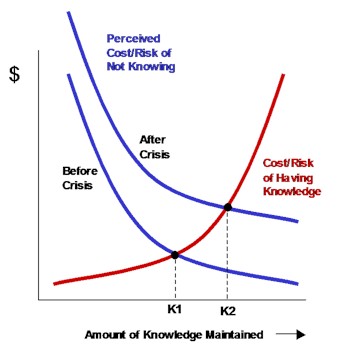
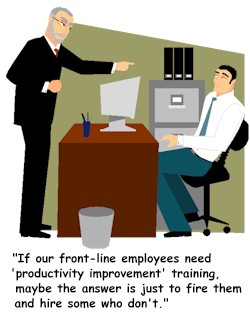 This bottom-up approach to KM, directed at the needs of individual employees and their peer-to-peer interactions has come to be called Personal Knowledge Management (PKM). It offers tremendous possibilities, and could finally realize the original promise and expectations of KM, but it can’t be done within the budget that most organizations set aside for KM. It requires a recognition from management that the four sets of activities bulleted above
This bottom-up approach to KM, directed at the needs of individual employees and their peer-to-peer interactions has come to be called Personal Knowledge Management (PKM). It offers tremendous possibilities, and could finally realize the original promise and expectations of KM, but it can’t be done within the budget that most organizations set aside for KM. It requires a recognition from management that the four sets of activities bulleted above 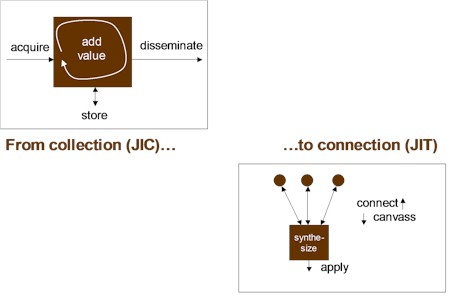


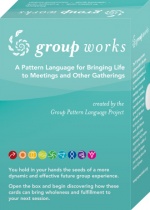

Mind-numbing. Eye-glazing. Enough with the flow charts. Loosen up and have a brainfart or something.
OK .. I understand Fiona’s comment, but don’t agree that it is mind-numbing or eye-glazing if one has any significant interest in the design and efficacy of knowledge work in an era where most of that work takes place with the fundamental support of an interconnected digital infrastructure.So .. Dave, where and when is the book that expands this essay into the primer for designing AND IMPLEMENTING ?
Wow! Very Lucid and too the point. Amazing work.
I foung this a fantastic read, full of ideas that I need right now to help me focus a strategy for my organisation. You’ve elucidated my concerns and given me structure and clarity with the idea of PKM. Thanks for all this.
I look forward to reading more of your ideas on PKM and second the motion for a practical how-to book.
Very interesting read and lots of excellent material – particuarly the “primer on how some of these elements can be introduced”. My only criticism would be the over-emphasis, as I see it, on IT solutions and programmes. This can and does leave people cold, unless they happen to share this particular enthusiasm.
Hi Dave,It was really wonderful to share with you the PKM approach. I was amazed to see a formal systematic account of most of what you have said being put to my personal work practice in the my recent KM practices in the government. It would be helpful if we could have a shared repository of practices/strategies by folks using the many approaches that you have cited.I look forward to your published article later this year as a chapter in a compendium book on emerging trends in KM. Thanks very much.
Don’t think I understood it all but good reading anyhow. Thanks!